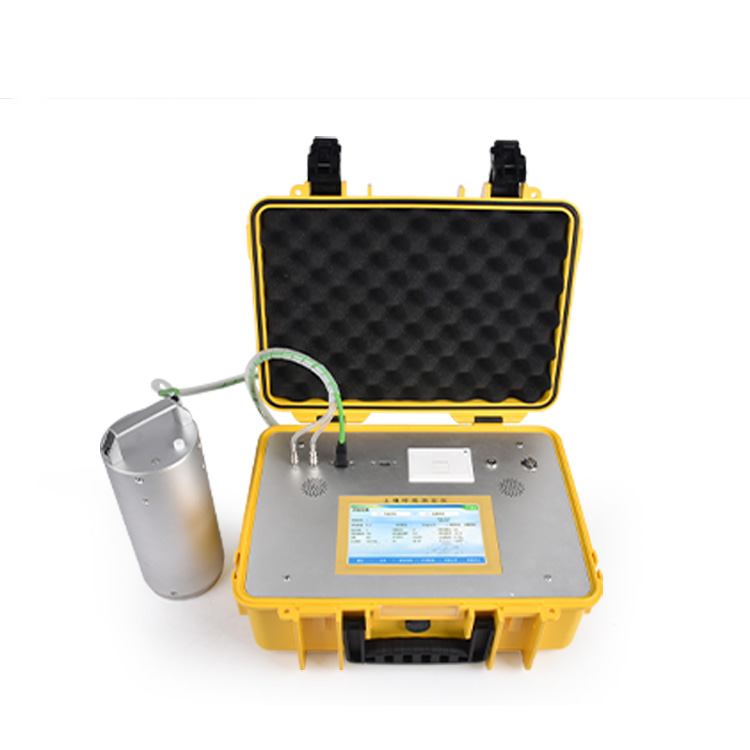Shandong Fengtu IOT Technology Co., Ltd
Sales Manager:Ms. Emily Wang
Cel,Whatsapp,Wechat:+86 15898932201
Email:info@fengtutec.com
Add:No. 155 Optoelectronic Industry Accelerator, Gaoxin District, Weifang, Shandong, China

Sales Manager:Ms. Emily Wang
Cel,Whatsapp,Wechat:+86 15898932201
Email:info@fengtutec.com
Add:No. 155 Optoelectronic Industry Accelerator, Gaoxin District, Weifang, Shandong, China

Model:FT-TH2
Brand:fengtu
1.Soil Respiration Meter Overview
The Soil Respiration Meter can display the change of CO2 concentration and humidity in the respiratory chamber, and is specially used to measure the parameters related to soil respiration rate.Soil respiration is an important process in the carbon cycle of soil ecosystems. It is the result of the balance of soil carbon assimilation and dissimilation. It is also the main way for carbon to return to the atmosphere from terrestrial ecosystems. It is a representation of life activities in the soil. Accurately measuring its release is the key to evaluating biological processes in ecosystems. By monitoring soil respiration and its related parameters, the response of roots and soil microorganisms to climate change can be estimated. The soil respiration meter can simultaneously display the changes in CO2, H2O, N2O, CH4, temperature and humidity inside the respiration chamber. It is widely used in agricultural ecological research, carbon source and carbon sink research, global climate change, changes in land use, ecological restoration research, soil microbial activity assessment, plant ecology research, insect respiration, root respiration and fruit storage.
2. Soil Respiration Meter Features:
1. Android operating system, more convenient human-computer interaction operation
2. 7-inch high-definition touch screen, simple operation and clear interface;
3. The gas flow rate can be set through the instrument, and the soil respiration intensity test under different flow rates can be carried out;
4. Special dynamic analysis software can display the experimental process in real time on the Android display, eliminating the need to copy data to the computer for sorting and analysis;
5. Support wifi and 4G networking; data can be uploaded to the cloud platform wirelessly;
6. Storage space 16G, can store more than 100,000 pieces of data;
7. Data can be exported directly to a USB flash drive through the USB interface;
8. After the test is completed, the test data results can be directly printed and uploaded;
9. Support GPS positioning;
3. Soil Respiration Meter Technical Indicators
CO2: Measurement range 0-5000ppm; Accuracy 1% VOL; Resolution 1ppm; Detection limit ≤1%VOL
H2O (water vapor): measurement range 0-100%RH; accuracy 1%RH; resolution 0.001; detection limit ≤1%RH
N2O: Measurement range 0-500ppm; Accuracy ≤+2%FS; Resolution 1ppm; Detection limit ≤1%
CH4: Measurement range 0-100ppm; Accuracy ±2ppm; Resolution 0.5ppm Detection limit ≤1%
Atmospheric pressure: measuring range 300-1100 hPa; resolution 1hPa; error 10 hPa
Respiratory chamber temperature: measurement range 0-50℃; resolution 0.001; error s±0.2℃
Respiratory chamber humidity: measurement range 0-100%RH; resolution 0.001; error S±1%RH
Respiration intensity/carbon flux: unit: μmol/m²·s, automatically converted by the instrument based on CO₂ measurement data
Gas flow rate: standard 800ml/min adjustable
Breathing chamber size: 180mm(H)x100mm(D)
Breathing chamber volume: 1413 cm3
Power supply: 12V DC lithium battery, full charge life 8 hours
4. Soil Respiration Meter Packing List
1. 1 host
2. 1 breathing room
3. Charger 1
4. Data cable (tube) 1 set
5. 1 copy of instruction manual
6. 1 USB flash drive
7. 1 packing list
8. One certificate of conformity
The 10km visibility sensor is a high-performance device that accurately measures visibility and plays a key role in a variety of applications. In this article, we will describe the working principle of the 10km visibility sensor, its advantages and its importance in areas such as meteorological obse...
A wind sensor is a sensor device used to measure and record the direction of the wind, usually in the fields of meteorology, environmental monitoring and agriculture. It calculates the wind direction by measuring the wind speed and, based on the principles of hydrodynamics. These sensors usually pro...
weather detecting technology is a device that measures and monitors meteorological conditions and is used for weather forecasting, weather monitoring, and other meteorological services....
Agricultural mini-weather stations are an important technical tool in agricultural production activities and one of the manifestations of smart agriculture. In the process of China's agricultural development, agricultural weather information has always played an extremely important role, which n...